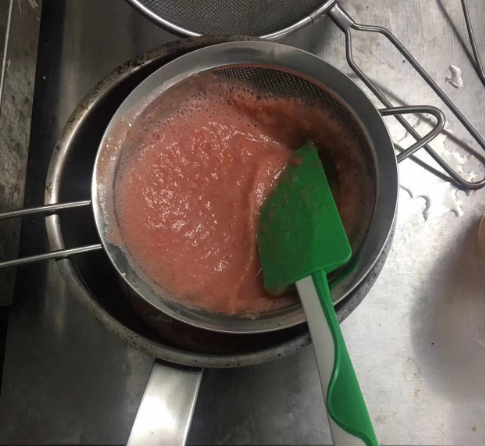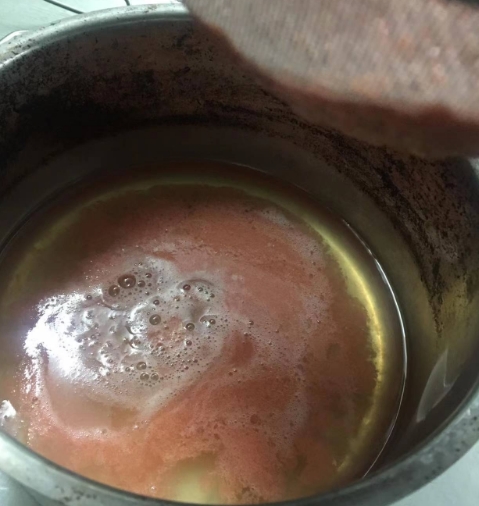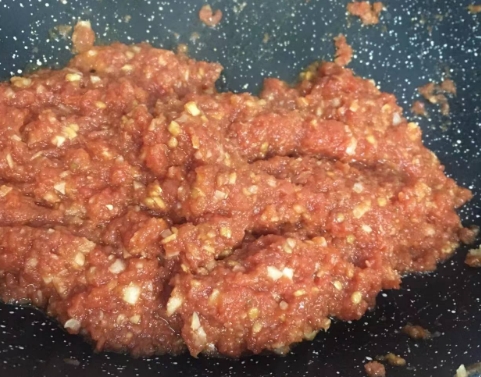My friends who know me well all know that I am a huge fan of tomatoes. When I cook at home, I often make tomato soup, and when I visit others, I often bring curry mixed with tomatoes.
Even when I cook for myself, I frequently make tomato soup. Recently, I watched a video by the popular cooking blogger Da Chu Gao Han on Bilibili, and his cooking skills are truly impressive. One of the videos discusses his methods for handling tomatoes, and I tried to follow his logic in the video, resulting in an amazing outcome. I even feel that my cooking skills have improved, a feeling I haven't experienced in a long time.

Is a tomato a fruit or a vegetable? This question has sparked a lot of debate, but most people in the kitchen consider it a fruit. Deep down, I also feel that tomatoes lean more towards being a fruit, but whenever someone asks me what my favorite vegetable is, I always say it's tomatoes. Sometimes, tomatoes feel to me like bats, sometimes they say they are birds, and sometimes they say they are mammals.
This time, I cooked shredded chicken with tomatoes. It's a bit embarrassing because I simply bought chicken breast to cook for my cat, but seeing that there was quite a bit, I thought I might as well eat some myself.

It's a bit messy, please forgive me, but my girlfriend came in and just inhaled it.
First, I used a portable juicer to turn the tomatoes into puree, with the aim of filtering out the tomato water. I have to say, this tomato puree looks a bit like watermelon.

In fact, tomatoes are quite a complex ingredient. In my eyes, all ingredients are complex, as they contain a lot of chemical substances, and the chemical reactions during cooking are difficult to predict and control accurately. The underlying logic of tomatoes is that they contain a lot of aromatic substances that will be destroyed by preheating, but the lycopene that provides a rich tomato flavor must be heated to be slowly released. Even in low quantities, the effect is quite noticeable.
A similar situation occurs with most plants, so my method is to filter out the tomato water, then sauté the tomato puree to enhance its aroma, and finally add the tomato water to the chicken broth before serving to enhance the flavor.

This method is rare in households but often seen in food factories or chemical plants. Researchers use centrifuges to extract these liquids for further study.
The remaining tomato flesh is stir-fried with minced garlic and ginger, and of course, I used lard, which makes it much more fragrant.
After stir-frying, it resembles the early stages of tomato sauce made in a food factory. Many fast-food brands and tomato sauce brands specifically cultivate low-water tomatoes, as only tomatoes with less moisture can achieve a wide range of Maillard reactions during stir-frying; if there is too much moisture, it will slow down the rate and effect of the Maillard reaction.

Of course, if you want to save time, the first thing to do is to put the chicken breast in a pressure cooker for 30 minutes. Chicken breast is mainly protein, so cooking it a bit longer won't affect the texture, and my chicken breast was taken directly from the freezer to cook. I don't like to use too much water; just enough to cover the chicken breasts about 80% is fine, so that the broth becomes lean meat broth. A little salt makes it very tasty, and sometimes if there's leftover, I give it to the cat.
To easily shred the cooked chicken breast, you can use a fork, and in no time, you can turn the chicken breast into shredded chicken. Some friends see it and ask if I made hand-shredded chicken, and I think to myself, hand-shredded chicken has bones, okay...

After the chicken breast water cools slightly, you can pour in the tomato water. The lean meat broth, which originally only had a salty and fresh flavor, now mixes with the amino acids and trace elements from the tomatoes, instantly enhancing the flavor's complexity. I found the tomato water a bit grassy when I tried to drink it directly, so it seems it shouldn't be consumed straight; no wonder Gao Han uses it for cocktails.
Once the chicken is shredded, I stir-fried it with the tomato puree. The process of continuously stir-frying the shredded chicken and tomato puree, releasing aromas and gradually blending colors, is incredibly satisfying and healing to watch. Occasionally, I take a piece out to taste, and it makes me nod vigorously. Moreover, there was a bit too much lean meat broth, so after mixing, I fed the shredded chicken spoon by spoon. Although I don't know if this method truly enhances the flavor, since it's not shark fin or abalone, the aroma is definitely more pronounced.

Finally, I casually cooked some hand-pulled noodles, chopped some fresh cilantro and green onions, and it was another super enjoyable process. I don't know if you feel the same way, but I personally think that when I chop green onions and cilantro, each cut makes a swishing sound, which always makes me feel like my knife skills are particularly good. When others see it, I always feel a sense of satisfaction, and even my dad says I'm a quick-handed chef, which gives off a bit of a gangster vibe.
This shredded chicken is seasoned with fish sauce and light soy sauce. Unfortunately, I didn't have rosemary at the time; a little bit would have made it even more amazing. The chicken broth mixed with tomato water makes for the perfect base for the hand-pulled noodles, with a light color and rich flavor. Each bundle of shredded chicken seems to absorb the broth like a brush tip that can soak up ink. Taking a bite, it doesn't feel dry at all, and with cilantro as a companion, the whole bowl of chicken noodle soup was finished in no time. My girlfriend devoured it even faster.

There is indeed a dish called chicken noodle soup in Chinese cuisine, which I haven't tried before; it seems to be served cold. Mine is a soup noodle, and sometimes when I eat chicken breast, I wonder why those fitness enthusiasts say chicken breast and broccoli are so unappetizing. It seems they just don't put time and effort into cooking. I don't know if fitness supports chicken breast, but you definitely don't have to eat plain chicken breast. In the past, I often made curry chicken breast with rice because it makes a big pot, enough to eat for two days, which is convenient.
Some people think that curry uses a lot of high-calorie ingredients, which is a misconception. Once you've cooked curry, you'll understand that curry powder and curry paste are often healthier than salad dressings because they contain no sugar. I used lard when stir-frying the tomato puree, which is quite healthy, right? It's also strange to think that even restaurants selling fitness meals do the same. They only serve plain chicken breast and plain vegetables, with no salt at all. Why treat yourself so poorly? Is it really healthy to have no salt and no oil?
